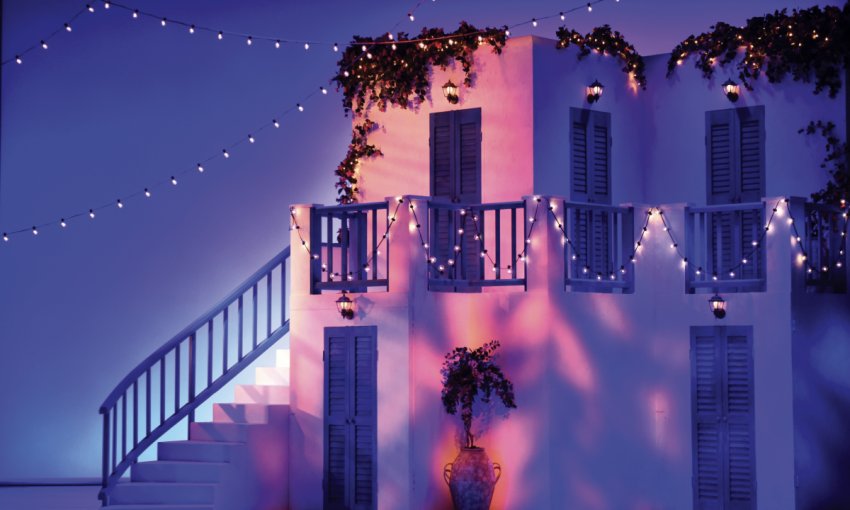Singing with the tune of power tools and the dancing of forklifts, the Adelaide Festival Centre scenery workshop is Australia’s largest producer of musical theatre sets and infrastructure.
Setting the scene
Mike Price and Kent Lindstrom are unsung heroes of the theatre world. For 30 years the pair have worked side by side at the Adelaide Festival Centre’s scenery workshop, building sets for many of the biggest musicals, theatre productions, operas and ballets.
Since 1979, producers around the world have relied on the workshop to bring their visions to life on stage. As the leading theatre workshop in the Southern Hemisphere, the small team at Pooraka produce the majority of musical theatre sets in Australia.
From stage floors to mechanical scenery and lighting rigs, Mike and Kent’s crew of carpenters and metal workers create sets that can be disassembled quickly and safely, and transported between venues. Workshop staff travel all over the world to supervise sets moving into international venues.

Creating a successful backdrop for any show comes down to the details. Mike, the automation and mechanical manager, says his team goes the extra mile. “The producers are very particular about how the show looks from all angles and I don’t think the audiences realise the amount of work and accuracy that goes into it,” he says. “I don’t like anything leaving the shop that isn’t right.”
Scenery pieces include huge moving props which emerge from the floor, or hang from above, such as a giant 600-kilogram swinging chandelier in Phantom of the Opera. A piece of scenery can be up to 18 metres wide and three storeys high. “Some of the operas are massive, just the sheer size of what they want to build,” Mike says. “Sometimes they want you to do things that are just physically impossible.”
Winning a Helpmann Award for best scenic design, the Matilda set has since been purchased by a company in Korea. “We’ve done quite a few shows in Korea,” says Mike. His colleague Andrew Starr has been to Korea more than 30 times to oversee set installations. “A lot of the producers ask for him because he’s extremely good with logistics and working with the Korean crew. You’re usually given an interpreter to work with, but he’s learnt enough Korean so he can talk with the crew.”
Kent, the workshop’s carpentry manager, says materials range from heavy steel infrastructure, to props made of lightweight material. “We use a bit of artistic flair,” he says.
“Items can be quite fragile, so you have to pack them properly otherwise they could be destroyed in the back of a truck. We produce trolleys to safely protect the painted surfaces for safe loading and travel.” Some components are so big the trolleys can weigh three or four tonnes.
Fitting and re-purposing sets for different sized theatres is a major challenge. “We’ve got to design the framework so it can be broken down with no visible joins, and light and easy to carry and set up. The turnaround always needs to be quick.”
 Although they can’t attend every show that they build, Mike still gets a kick out of going to the theatre where the scenery works its magic. “I still get goose bumps,” Mike says. A favourite of his was the opening night of Phantom in 1990. His team had designed 130 candles with flickering lights to rise up from trap doors in the floor. “The set was stunning, and when the audience cheered the hairs on the back of my neck stood up. This is not a bad industry in to be in.”
Although they can’t attend every show that they build, Mike still gets a kick out of going to the theatre where the scenery works its magic. “I still get goose bumps,” Mike says. A favourite of his was the opening night of Phantom in 1990. His team had designed 130 candles with flickering lights to rise up from trap doors in the floor. “The set was stunning, and when the audience cheered the hairs on the back of my neck stood up. This is not a bad industry in to be in.”
The scenery workshop oversaw 25 years of touring the Phantom set through South East Asia, New Zealand, South Africa, China and Korea. Other sets built by the team include Billy Elliot, Sunset Boulevard, Singing in the Rain, Wizard of Oz, Hairspray and Cats to name a few.
One of their most recent sets, Mamma Mia! arrives in Adelaide this month. The show’s UK-based producer Louise Withers grew up at Para Hills, and worked at the scenery workshop for a short period in the 1980s. Louise is a regular customer of the workshop, which she says is an eminent leader in its field.
“We choose to use the AFC’s workshops as they are the leading facility in the country,” Louise says. “Since the 1980s they have not only designed, built, refurbished and maintained the country’s major productions, but they have also been at the cutting edge of solving challenges where original designs were too complex to work in our Australian theatres.”
Louise says an important element of touring is to minimise trucking requirements, and down-time between seasons. The set must be built as sturdily as possible to survive being dismantled and transferred several times. “In itself, this is a task that not every workshop gets right, but makes a huge difference in costs.
“Set design and construction plays a vital role in the viability of any production or tour. It is not unusual for sets to have a budget of more than a million dollars in costs. Its design, construction, tour ability and maintenance is critical.”
This article was first published in the October 2018 issue of SALIFE.



